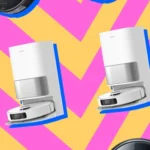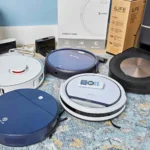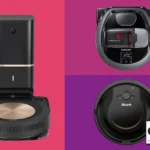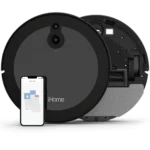Smart vacuums have become a popular household item in recent years, providing an effortless cleaning experience for homeowners. However, with the rise of technological advancements, the navigation systems within these devices have also evolved. Two of the most prominent navigation technologies used in smart vacuums are LIDAR and VSLAM. You may be wondering which technology suits your needs the best. To answer that question, we delve deep into the differences between LIDAR and VSLAM navigation, their respective advantages and disadvantages, and their real-life performance. By the end of this article, you will have a comprehensive understanding of which technology can provide the ideal navigation experience for you.
LIDAR Technology
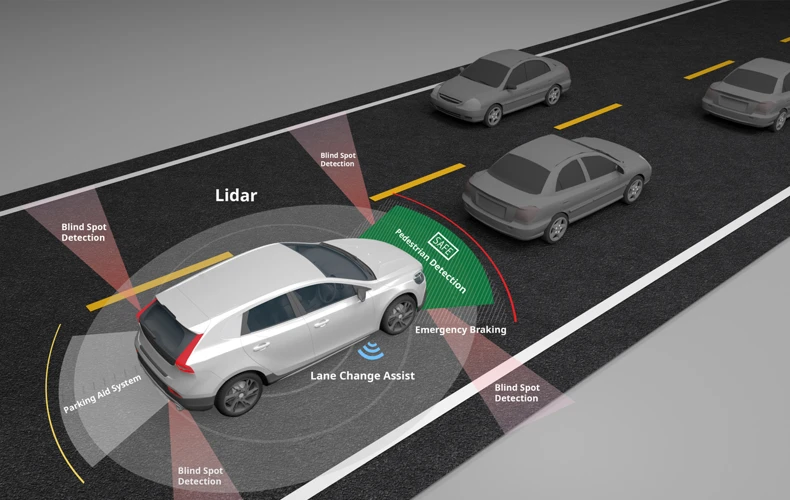
LIDAR technology is one of the most advanced and sophisticated types of navigation systems in smart vacuums. It uses light detection and ranging technology to create an accurate and precise map of the surroundings. LIDAR technology is an essential tool for autonomous driving and has made its way into smart vacuums as well. In this section, we will explore the intricacies of LIDAR technology, how it works in smart vacuums, and its advantages and disadvantages. If you are interested in other comparisons of smart vacuums, check out our comparison of smart vacuums for pets.
What Is LIDAR Technology?
LIDAR technology, which stands for Light Detection and Ranging, is a remote sensing method that uses light in the form of a pulsed laser to measure variable distances to an object. LIDAR technology is widely used in the field of robotics for precise mapping and navigation.
The way LIDAR works is by emitting a beam of light, which bounces off any object that it comes across, and then returns to the sensor. By calculating the time it takes for the beam of light to return, LIDAR is able to determine the distance between the sensor and the object. LIDAR also measures the angle at which the beam of light is reflected, which allows it to create a three-dimensional map of the environment.
LIDAR Navigation in smart vacuums involves a 360-degree scan of the room, which is used to build an accurate map of the space. The vacuum cleaner then uses this map to navigate around the room and avoid obstacles. In case of encountering an obstacle, the LIDAR sensor is able to detect it and adjust the cleaning path accordingly.
Advantages of LIDAR Navigation
- Highly accurate mapping of the cleaning area with three-dimensional data
- Vacuums using LIDAR technology are able to recognize furniture, walls and other obstacles with ease
- Can operate efficiently in any lighting conditions
Disadvantages of LIDAR Navigation
- The cleaning process may take slightly longer since the vacuum needs to create a map of the space
- Vacuum cleaners with LIDAR technology have a higher price point compared to models with other navigation systems
- Not always as suitable for taller obstacles compared to models with cameras or multiple sensors.
LIDAR technology has its pros and cons, as does any other type of vacuum navigation system. To determine the best option for you and your home, it is important to examine all of the available technologies and weigh the advantages and disadvantages of each. A comparison between LIDAR and VSLAM technology can be found in the upcoming sections of this article, while our recommendation can be found in the next section after that. To explore other aspects that may help you in choosing a smart vacuum, check out our article on filter systems compared: HEPA vs Standard Filters in Smart Vacuum Cleaners.
How LIDAR Navigation Works in Smart Vacuums
LIDAR navigation stands for Light Detection and Ranging. On smart vacuums, it works by using lasers to scan the surrounding area, measuring the distance of the objects around it. As the laser rotates, it creates a 2D or 3D map of the room. This map is then processed by the vacuum’s computer, which determines the best cleaning path for the vacuum.
The LIDAR sensor can accurately detect even small items such as wires or toy parts, making it possible to avoid collisions. Since the LIDAR system generates a detailed map of the room, it is also possible to handle multiple floors or save maps of different homes or rooms. The map stored in the robot’s memory allows it to make its way back to its charging dock with high precision.
LIDAR navigation is considered to be the most accurate system on the market. It can accurately detect and avoid obstacles without bumping into them. This ability makes cleaning faster and more efficient. It is also a more sophisticated technology, which is reflected in the higher price of vacuums that use it.
However, LIDAR navigation technology works best in well-lit environments because it uses lasers to detect the surrounding area. Without adequate lighting, it may not be able to create an accurate map, leading to less efficient cleaning. LIDAR sensors also require more energy, which can lead to a shorter battery life compared to vacuums that use other technologies.
LIDAR technology works by using lasers to scan the surrounding area, creating a detailed map that the vacuum’s computer uses to determine the optimal cleaning path. LIDAR navigation is highly accurate in detecting and avoiding obstacles, making cleaning faster and more efficient. However, it is more expensive and requires adequate lighting to work well.
Advantages of LIDAR Navigation
LIDAR (Light Detection and Ranging) navigation technology is currently one of the preferred methods used in smart vacuums. There are several reasons why LIDAR navigation technology is a smart choice for these devices that use advanced systems for determining their cleaning paths. Below are some of the key advantages of LIDAR navigation technology:
| Advantages of LIDAR Navigation |
|---|
| Highly Accurate: LIDAR technology provides an accurate and precise map of the cleaning area, ensuring that the smart vacuum does not miss any spots. This level of accuracy is particularly important for larger areas and complicated floor layouts. |
| Can Navigate in the Dark: LIDAR technology uses laser sensors that can work in the dark, which makes it possible for the smart vacuum to clean at any time of the day or night. |
| Can Detect Obstacles Accurately: With its advanced sensors, LIDAR technology can detect and avoid obstacles such as furniture or other household devices more accurately than other navigation systems. |
| Can Create Detailed Maps: Another advantage of LIDAR technology is that it can create detailed maps of its cleaning path in real-time. This can help to provide useful information that can help the smart vacuum cleaner to work more efficiently and effectively. |
| More Suitable for Large Spaces: LIDAR technology is particularly useful for cleaning larger spaces such as office buildings or commercial areas where it is essential to be able to navigate efficiently and quickly. |
The LIDAR navigation technology is an effective and efficient method for smart vacuums to clean your living space. It provides a high level of precision and accuracy that ensures your floors are spotlessly cleaned. If you’re interested in further comparisons of smart vacuum devices, you can check out our detailed articles on bagged vs. bagless smart vacuum cleaners and most powerful smart vacuums.
Disadvantages of LIDAR Navigation
When it comes to LIDAR navigation technology in smart vacuums, there are a few disadvantages to consider. These include:
- Cost: One of the biggest drawbacks of LIDAR technology is its high cost. LIDAR sensors are more expensive to manufacture and install than other types of sensors, which can make LIDAR-equipped smart vacuums pricier than their counterparts.
- Mapping errors: While LIDAR boasts high levels of precision and accuracy, it can still suffer from mapping errors. In particular, LIDAR can struggle to accurately map reflective surfaces, such as mirrors and glass, which can result in incomplete or inaccurate maps.
- Noise levels: LIDAR sensors can emit a high-pitched noise, which some users may find irritating or distracting. While this noise is generally not very loud, it can still be noticeable in quiet environments.
- Obstacle height: LIDAR technology can struggle to detect obstacles that are at a low height or that blend in with the surroundings. This means that small objects, such as toys or cables, may not be detected by the LIDAR sensor, potentially causing the smart vacuum to collide with them.
While these disadvantages are important to consider, it’s worth noting that LIDAR technology also offers many advantages. For example, LIDAR boasts incredible precision and accuracy, which can result in highly efficient cleaning. Additionally, LIDAR sensors are great at detecting large obstacles, such as tables and chairs, which can help prevent collisions and damage to the smart vacuum.
To learn more about other aspects of smart vacuums, check out our articles on noise levels, battery life, self-emptying vs non-self-emptying smart vacuums, and mopping capabilities.
VSLAM Technology
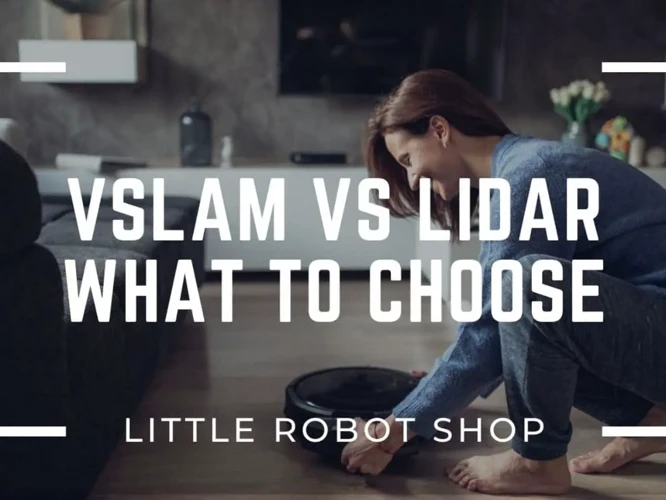
As an alternative to LIDAR technology, Vision-based Simultaneous Localization and Mapping (VSLAM) has been gaining popularity in the field of smart vacuums. VSLAM technology utilizes cameras to navigate and map a home, allowing for precise movement and cleaning. While this technology has its advantages, it also has some limitations that must be taken into consideration when comparing it to LIDAR. Let’s take a closer look at what VSLAM technology is, how it works in smart vacuums, and its pros and cons.
What Is VSLAM Technology?
VSLAM stands for Visual Simultaneous Localization and Mapping. It is a navigation technology that uses a camera to map out the environment and locate itself within it. Here are some of the key features of VSLAM technology:
- Uses a camera: VSLAM technology relies on a camera to capture images of the environment and create a map of the area.
- Simultaneous Localization and Mapping: The camera captures images while the robot is moving, allowing it to combine movement and mapping in real-time. This makes it possible for the robot to navigate autonomously.
- Works with natural features: VSLAM uses natural features in the environment, such as shape, color, texture, and contrast, to create a map. This means that it does not require any additional sensors or equipment.
- Real-time: VSLAM technology updates the map as the robot moves, providing real-time information about the environment.
VSLAM technology is a promising navigation option for smart vacuums. It offers some distinct advantages over LIDAR, such as lower cost and easier setup. However, it has some limitations, such as the need for good lighting and the inability to detect transparent or reflective objects. When considering which technology to use, it is important to weigh the pros and cons of each and consider your specific cleaning needs.
How VSLAM Navigation Works in Smart Vacuums
VSLAM or Visual Simultaneous Localization and Mapping is a technology that uses sensors and cameras to navigate through an environment. When a smart vacuum cleaner equipped with VSLAM technology starts cleaning, it captures a 360-degree view of the room using its sensors and cameras.
The following step-by-step process explains how VSLAM navigation works in smart vacuums:
- Step 1: The sensors and cameras on the vacuum cleaner scan the environment to build a map of the room. The vacuum cleaner then uses this map to determine its position within the room.
- Step 2: The vacuum cleaner then moves around the room using its sensor data to steer clear of walls and obstacles.
- Step 3: As it cleans, it continues to update the map and modify its path accordingly. This way, it can more efficiently clean the entire room.
- Step 4: VSLAM technology can work in different kinds of environments, including low-light conditions. The vacuum cleaner uses infrared sensors to detect and avoid obstacles while navigating smoothly around the room.
- Step 5: VSLAM technology also enables the vacuum cleaner to create a virtual boundary to ensure that it doesn’t clean beyond a specific area.
VSLAM navigation is a reliable and increasingly popular technology for smart vacuums. It allows them to navigate effectively, even in the most cluttered of environments, with minimal delay or interruption.
Advantages of VSLAM Navigation
VSLAM Navigation, which stands for Visual Simultaneous Localization and Mapping Navigation, is a relatively new technology in smart vacuums, but it has quickly gained popularity due to its advantages over other navigation systems. In this section, we will discuss the advantages of VSLAM Navigation in detail.
One of the significant advantages of VSLAM Navigation is its cost-effectiveness. Compared to LIDAR technology, VSLAM systems usually cost less because they rely on the robot’s built-in camera and a few other sensors instead of a more advanced and expensive laser sensor. This price difference makes VSLAM systems more affordable options for consumers who are looking for smart vacuums that have navigation capabilities.
Another benefit of VSLAM Navigation is its flexibility. Unlike LIDAR technology that requires a clear line of sight, VSLAM systems can navigate in various lighting conditions, including low-light scenarios, thanks to their computer vision capabilities. This makes VSLAM-enabled vacuums efficient at cleaning under furniture and in dimly lit rooms.
VSLAM Navigation is also known for its runtime efficiency. The system can perform localization and mapping tasks while the robot is in motion, which significantly shortens the cleaning time. The robots are not required to pause frequently to process data, unlike LIDAR systems, which have to take time to record and analyze data before proceeding. This feature is particularly useful when cleaning more significant areas or entire buildings and offices.
An additional advantage of VSLAM Navigation is its obstacle detection and avoidance capabilities. VSLAM systems can create accurate maps of the environment in real-time, allowing them to detect obstacles quickly and navigate around them without getting stuck. This navigation system helps smart vacuums avoid objects like furniture, toys, and cords, ensuring they can clean smoothly without causing damage around the house.
Finally, VSLAM Navigation is easy to install and set up. Since it utilizes the robot’s onboard sensors and camera, users can set up their robot for VSLAM navigation by simply upgrading their firmware or software rather than installing an additional system like with LIDAR-enabled vacuums.
VSLAM Navigation brings a new level of efficiency, flexibility, and accuracy to smart vacuum cleaning. Its key advantages include cost-effectiveness, flexibility in low-light conditions, runtime efficiency, obstacle detection and avoidance, and ease of installation and setup.
Disadvantages of VSLAM Navigation
Although VSLAM technology has various advantages, it also has some notable disadvantages. Below are the major disadvantages of VSLAM navigation:
- Less Accurate than LIDAR: Compared to LIDAR, VSLAM technology is less accurate when it comes to navigation. This is because the technology relies on visual recognition, which is not as accurate as LIDAR’s laser technology. VSLAM navigation can occasionally miss spots or take longer routes due to inaccurate mapping.
- Dependent on Lighting Conditions: VSLAM technology is highly dependent on lighting conditions. It requires regular lighting without any major shadows or changes in lighting to effectively navigate. For example, if a room has a lot of natural light during the day but is dimly lit at night, VSLAM technology may not be able to navigate effectively in the dark.
- Limited Battery Life: Since VSLAM requires a constant stream of visual images to map an area and navigate effectively, it requires high power consumption. The high battery usage can limit the runtime of a smart vacuum that uses VSLAM, which can be problematic for larger houses or rooms.
Despite these disadvantages, VSLAM technology is still highly effective and widely used in smart vacuums due to its cost-effectiveness and ability to navigate terrain effectively. The suitability of VSLAM technology will depend on the user’s needs and budget.
Comparison Between LIDAR and VSLAM Technology
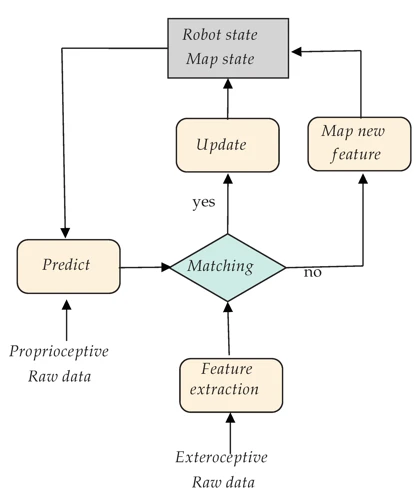
Now it’s time to compare the two technologies that we’ve gone into depth about: LIDAR and VSLAM. While both LIDAR and VSLAM offer efficient ways to navigate smart vacuums, they differ in terms of their precision, cost, mapping capabilities, runtime, obstacle detection and avoidance, navigation in low light conditions, and setup and installation. In this section, we’ll examine the advantages and disadvantages of each technology and provide you with a detailed comparison between the two, so you can determine which one is the right fit for you and your home. Let’s dive in!
Precision and Accuracy
When it comes to precision and accuracy, both LIDAR and VSLAM technologies have their own strengths and weaknesses. LIDAR technology is known for its exceptional precision and accuracy. The lasers used in LIDAR technology can detect even the smallest obstacles and map out an area in great detail. This makes it an ideal choice for cleaning large and complicated spaces.
On the other hand, VSLAM technology is not as precise or accurate as LIDAR technology. Because it relies on a combination of sensors and algorithms to map out an area, there is a greater chance of errors or missed spots. However, VSLAM technology has come a long way in recent years and is still a viable option for most homeowners.
Here is a table comparing the precision and accuracy of LIDAR and VSLAM technologies:
| LIDAR | VSLAM | |
|---|---|---|
| Precision | High | Medium |
| Accuracy | High | Medium |
As you can see from the table, LIDAR technology has a higher precision and accuracy than VSLAM technology. This means that LIDAR-equipped robots are more likely to navigate around obstacles and clean every corner of a room. However, this level of precision comes with a higher cost.
When choosing between LIDAR and VSLAM technologies, it’s important to consider the size and complexity of the area you want to be cleaned. If you have a large and complicated space, then LIDAR technology may be the better option despite its higher cost. But if you have a smaller, less cluttered home, then VSLAM technology may be just as effective at a lower cost.
Cost
When it comes to the cost of LIDAR vs. VSLAM technology, there is no clear winner. Both technologies come at different price points and offer varying features. LIDAR navigation tends to be more expensive due to the complex hardware involved in creating a 3D map of the environment. The cost of LIDAR can be prohibitive for some consumers, putting it out of reach for those on a tight budget.
On the other hand, VSLAM technology is generally more affordable than LIDAR due to the fact that it relies on existing sensors like cameras, gyroscopes, and accelerometers, which are already commonly found in most smart devices. This makes it a more cost-effective option for companies looking to manufacture smart vacuums that won’t break the bank.
Despite the price difference, it’s important to consider what features and capabilities each technology provides. A more expensive LIDAR-equipped smart vacuum may be worth the investment for those who prioritize precision and accuracy in navigation. On the other hand, a more affordable VSLAM-equipped vacuum may be sufficient for those who have simpler cleaning needs and prioritize cost savings.
To better compare the cost differences, we’ve outlined a table below:
| Technology | Price Range |
|---|---|
| LIDAR | Expensive |
| VSLAM | Affordable |
Ultimately, the choice between LIDAR and VSLAM technology comes down to personal preference and budget. Consumers should weigh the pros and cons of each technology and determine which one best suits their needs and budget.
Mapping Capability
Mapping Capability is an important aspect to take into consideration when choosing between LIDAR and VSLAM technology in smart vacuums. LIDAR technology uses laser beams to build a precise 3D map of the home, while VSLAM technology uses a camera sensor to create a 2D map of the environment.
The mapping capability of LIDAR technology is:
| Advantages | Disadvantages |
|---|---|
| -Provides more accurate and detailed maps of the environment | -Can be more expensive due to the complexity of the technology |
| -Able to map and recognize multiple floor plans | -May have difficulty with reflective or transparent surfaces |
| -Can function even in low light or dark conditions |
On the other hand, the mapping capability of VSLAM technology can be summarized as follows:
The mapping capability of VSLAM technology is:
| Advantages | Disadvantages |
|---|---|
| -Creates a simple and quick 2D map of the environment | -May not be as precise or accurate as LIDAR technology |
| -Can be less expensive than LIDAR technology | -Requires good lighting conditions to function properly |
| -Less affected by reflective or transparent surfaces | -May have difficulty recognizing multiple floor plans |
Depending on your needs and preferences, mapping capability can be an important factor to consider when deciding between LIDAR and VSLAM technology. While LIDAR technology provides more precise and detailed maps of the environment, VSLAM technology can be a cost-effective and reliable alternative for simpler mapping needs.
Runtime
When it comes to the runtime, there are some differences between LIDAR and VSLAM technology that you should keep in mind when choosing a smart vacuum. Here are some key points to consider:
LIDAR Technology
- LIDAR technology typically consumes more power than VSLAM navigation, which can affect its runtime.
- LIDAR navigation requires the vacuum to scan the entire area with lasers to determine its position, which can take some time and further reduce its runtime.
- However, some LIDAR-based smart vacuums are designed to be more efficient in terms of power consumption and runtime, using optimized algorithms and better battery technology to operate for longer periods.
- LIDAR-based smart vacuums may have a slightly shorter runtime than VSLAM-based vacuums, but it depends on the specific model and features.
VSLAM Technology
- VSLAM technology is generally considered to be more energy-efficient than LIDAR navigation, which can result in longer runtime.
- VSLAM navigation uses a combination of cameras and sensors to create a 3D map of the surroundings and determine the vacuum’s location, which can be faster and less power-intensive than LIDAR’s scanning process.
- However, some VSLAM-based vacuums may have shorter runtime if they need to continuously monitor the environment and update their map in real-time.
- In general, VSLAM-based smart vacuums can offer longer runtime than LIDAR-based vacuums, which can be a significant advantage if you have a larger home or more cleaning to do.
The runtime is an important factor to consider when choosing between LIDAR and VSLAM technology. While LIDAR may have a slightly shorter runtime due to its power consumption and scanning process, some LIDAR-based smart vacuums are designed to be more efficient and can operate for longer periods. On the other hand, VSLAM-based vacuums are generally more energy-efficient and can offer longer runtime, especially for larger homes or more cleaning tasks. Ultimately, the specific model, features, and your cleaning needs will determine which technology is the best choice for you.
Obstacle Detection and Avoidance
Smart vacuums equipped with both LIDAR and VSLAM technology use their sensing capabilities for successful obstacle detection and avoidance on their cleaning way. LIDAR-based smart vacuums are capable of detecting obstacles in their path with great precision through their 360-degree laser scans. The laser scans help the smart vacuums identify obstacles, furniture, and objects in their way, and navigate around them safely. LIDAR technology using light to scan the surroundings of the smart vacuum, generate a 3D map of the environment, and update it in real-time, keeping the vacuum informed about its surroundings.
On the other hand, VSLAM-based smart vacuums rely on their high-tech sensors and processing algorithms to detect and avoid obstacles in their path. These smart vacuums capture images of the environment they’re cleaning and use machine learning algorithms to register objects and their positions to build a map of the house while avoiding obstacles. These smart vacuums use the technique of Simultaneous Localization and Mapping (SLAM), where a map gets built on the go, allowing the robot vacuum to detect obstacles and determine distances.
When it comes to obstacle detection and avoidance, both LIDAR and VSLAM technology have their advantages and disadvantages:
Advantages of LIDAR-based smart vacuums for obstacle detection and avoidance:
- LIDAR technology offers precision and accuracy in detecting and avoiding obstacles on their cleaning way.
- 360-degree laser scans provide a detailed map of the area surrounding the vacuum, making it easier to navigate around obstacles.
- Smart vacuums with LIDAR technology have a better view of the surrounding area, particularly in low light conditions.
Disadvantages of LIDAR-based smart vacuums for obstacle detection and avoidance:
- The cost of LIDAR sensors can be higher than that of VSLAM sensors.
- Some LIDAR-based smart vacuums struggle in finding reflective objects or objects with low reflecting properties.
Advantages of VSLAM-based smart vacuums for obstacle detection and avoidance:
- VSLAM technology can detect objects even in unlit areas.
- VSLAM-based smart vacuums can quickly adapt to changes in their surroundings as they clean, thanks to their live 2D map update capabilities.
- They are cost-effective in comparison to LIDAR-based smart vacuums.
Disadvantages of VSLAM-based smart vacuums for obstacle detection and avoidance:
- Smart vacuums with VSLAM technology struggle with shiny or reflective surfaces, which can cause detection errors.
- They might miss detecting small obstacles that do not appear in their field of view.
Both LIDAR and VSLAM technology have their strengths and weaknesses when it comes to obstacle detection and avoidance. Still, thanks to their cutting-edge capabilities, these technologies allow smart vacuums to sense and navigate through their surroundings.
Navigation in Low Light Conditions
When it comes to navigation in low light conditions, both LIDAR and VSLAM technologies have their own strengths and weaknesses. It’s important to consider this factor when choosing the right smart vacuum for your needs.
LIDAR Technology: LIDAR technology relies on emitting laser beams to detect objects in its surroundings. However, in low light conditions, LIDAR-based smart vacuums may face difficulties detecting objects accurately, leading to navigation errors.
VSLAM Technology: VSLAM technology, on the other hand, relies on cameras to map its surroundings and navigate. While some VSLAM-based smart vacuums may struggle in dimly lit rooms, others come equipped with low-light cameras that enable them to function effectively even in complete darkness.
To compare the two technologies in terms of their low light navigation capabilities, we’ve created a table below:
| Navigation in Low Light Conditions | LIDAR Technology | VSLAM Technology |
|---|---|---|
| Advantages | Works well in moderately low light conditions | Some models equipped with low-light cameras for effective navigation in complete darkness |
| Disadvantages | May face difficulties detecting objects accurately in low light conditions | Some models may struggle in dimly lit rooms |
Ultimately, it’s up to personal preference and the lighting conditions in your home to determine which technology is better suited for your needs. If you have a well-lit home, either technology should work well. However, if your home tends to be on the darker side, it may be worth investing in a VSLAM-based smart vacuum with a low-light camera to ensure effective navigation.
Setup and Installation
The setup and installation process for both LIDAR and VSLAM technology vary significantly. When it comes to VSLAM, the installation process is relatively straightforward and doesn’t require a lot of effort. The device only requires a camera and a processor to function accurately. On the other hand, LIDAR technology demands a bit more effort to set up, but it’s worth it.
The Setup and Installation Process for VSLAM Technology
VSLAM installation is pretty straightforward, and the process can be summed up in a few simple steps. Firstly, the device requires a camera, which can either be an external or built-in camera – this depends on the specific smart vacuum. After that, you need to power the device so that it can function correctly. Once the device is powered, you’re ready to go, and the smart vacuum can start operating.
The Setup and Installation Process for LIDAR Technology
LIDAR technology installation is a bit more complicated than VSLAM. Firstly, the device is sensitive and requires proper calibration when setting it up. The device uses sensors that can rotate 360° and create a map of the room or space where the smart device will operate. The user needs to set up the device in the middle of the room, and once it’s powered, the sensors will start rotating to capture the entire room’s details. The captured data will then be used to create a map of the entire space so that the smart vacuum can operate smoothly.
One significant advantage of the LIDAR technology is that it’s capable of creating maps that are accurate within a few millimeters. This level of precision is not possible with VSLAM technology.
Comparison of Setup and Installation between LIDAR and VSLAM Technology
The installation process of LIDAR technology is more complex but yields more accurate results. However, VSLAM is easier to set up, and it doesn’t require much effort. For those who prioritize ease of use and quick installation, VSLAM technology is the way to go. However, for those who need high-precision mapping, LIDAR technology is the clear choice.
Below is a table summarizing the comparison between setup and installation processes for LIDAR and VSLAM technology.
| LIDAR Technology | VSLAM Technology | |
|---|---|---|
| Complexity of Installation | Complex | Simple |
| Level of Precision | High (within a few millimeters) | Relatively low |
| Setup Time | Longer | Shorter |
Both LIDAR and VSLAM have their unique advantages and disadvantages when it comes to setup and installation. Before choosing either technology for your smart vacuum, consider your preferences, level of technical expertise, and how much time you’re willing to put into the setup.
Real-Life Performance and Finding The Right One for You
Now that we have explored the ins and outs of LIDAR and VSLAM technologies, the question remains – which one is the best fit for you? In other words, which one will provide the best real-life performance to meet your specific needs? In this section, we will examine the various factors to consider when choosing between LIDAR and VSLAM navigation for smart vacuums. By the end of this section, you will have a clear understanding of what to look for and our recommendation for the best technology to use. So, let’s dive in!
Factors to Consider When Choosing the Right Technology
When choosing between LIDAR and VSLAM technology, there are several factors to consider. Here is a table outlining the key differences between the two:
| LIDAR | VSLAM | |
|---|---|---|
| Precision and Accuracy | High | Good |
| Cost | Expensive | Affordable |
| Mapping Capability | Excellent | Good |
| Runtime | Shorter | Longer |
| Obstacle Detection and Avoidance | Excellent | Good |
| Navigation in Low Light Conditions | Excellent | Poor |
| Setup and Installation | Complicated | Straightforward |
Precision and Accuracy: LIDAR technology has a higher precision and accuracy than VSLAM. LIDAR uses laser beams to map the environment in high detail, while VSLAM relies on optical sensors and image processing.
Cost: LIDAR technology is more expensive than VSLAM. LIDAR devices are often found in higher-end models, while VSLAM is used in mid-range and budget-friendly options.
Mapping Capability: LIDAR has excellent mapping capability, as it can develop detailed maps and identify objects accurately. VSLAM is also good in this regard, but not as precise as LIDAR.
Runtime: Compared to VSLAM, LIDAR has a shorter runtime. This is due to the high energy consumption of laser beams used in LIDAR technology.
Obstacle Detection and Avoidance: LIDAR has excellent obstacle detection and avoidance capabilities, making it a great choice for households with many items to avoid. VSLAM also performs well in this regard but is not as good as LIDAR.
Navigation in Low Light Conditions: LIDAR performs better in low light conditions due to its use of laser beams, which are better at detecting objects in low light. VSLAM technology relies on optical sensors, and therefore, struggles in low light conditions.
Setup and Installation: LIDAR technology can be complicated to set up and install, while VSLAM is relatively straightforward. This is because LIDAR requires calibration and can be challenging to install correctly.
It is essential to consider these factors before making a purchase decision between LIDAR and VSLAM technology for your smart vacuum. Each has its pros and cons, and the best choice for you ultimately depends on your budget, household environment, and individual needs.
Our Recommendation
After considering the advantages and disadvantages of both LIDAR and VSLAM technologies, our recommendation is to go for LIDAR navigation for the best experience.
Here are the reasons why:
- LIDAR navigation offers unparalleled accuracy and precision when mapping and navigating your home.
- While VSLAM technology is evolving and becoming more affordable, LIDAR is still the most popular and reliable option on the market.
- LIDAR can handle mapping larger spaces and navigating more complex environments than VSLAM.
- Although LIDAR technology may come with a slightly higher price tag, the long-term benefits in terms of precision and accuracy make it worth the investment.
- LIDAR technology also has better obstacle detection and avoidance capabilities, making it perfect for homes with pets, kids, and lots of furniture.
- Finally, since LIDAR doesn’t rely on ambient light to navigate, it works in both well-lit and low-light conditions.
Ultimately, the choice between LIDAR and VSLAM navigation comes down to personal preferences and the specific needs of your home. However, we highly recommend LIDAR navigation for the best possible experience.
Conclusion
After examining the capabilities and limitations of LIDAR and VSLAM technologies in smart vacuums, it is clear that both options have their own set of strengths and weaknesses.
LIDAR technology provides high precision and accuracy when mapping and navigating a space but comes with a higher cost and potential limitations in obstacle detection and avoidance.
VSLAM technology, on the other hand, offers a more cost-effective solution that can still produce accurate maps and navigate a space with good obstacle detection and avoidance capabilities, but may struggle in low light conditions or with mapping larger areas.
When deciding on the right technology for your smart vacuum, it is important to consider factors such as the size and complexity of the space being cleaned, potential obstacles, and the desired runtime of the vacuum.
If precision and accuracy are top priorities, LIDAR may be the better choice, but for those on a budget or with simpler cleaning needs, VSLAM may be a more practical option.
Ultimately, the right technology for your smart vacuum will depend on your individual needs and priorities. By weighing the advantages and disadvantages of both LIDAR and VSLAM, you can make an informed decision and select a smart vacuum that will meet your needs and provide efficient and effective cleaning performance.
Frequently Asked Questions
What is the main difference between LIDAR and VSLAM technology?
LIDAR technology uses laser beams to navigate and collect data, while VSLAM technology uses a camera and algorithms to map and navigate an environment.
Which technology is more precise and accurate?
LIDAR technology is typically more precise and accurate than VSLAM technology.
What is the cost difference between LIDAR and VSLAM technology?
LIDAR technology is generally more expensive than VSLAM technology, which can make smart vacuums that use LIDAR navigation more costly.
Which technology is better at obstacle detection and avoidance?
LIDAR technology is typically better at obstacle detection and avoidance due to its 3D mapping capabilities.
Can smart vacuums using VSLAM technology navigate in low light conditions?
Yes, smart vacuums using VSLAM technology can navigate in low light conditions thanks to their ability to use visual cues.
What factors should I consider when choosing between LIDAR and VSLAM technology?
Factors to consider include precision, cost, mapping capability, runtime, obstacle detection, navigation in low light conditions, and setup/installation.
Which technology is better for mapping larger environments?
LIDAR technology is generally better for mapping larger environments due to its ability to create 3D maps and navigate with precision.
Do I need to have Wi-Fi for smart vacuums using LIDAR or VSLAM technology?
Yes, smart vacuums using either LIDAR or VSLAM technology typically require a Wi-Fi connection for remote control and mapping.
Is LIDAR technology louder than VSLAM technology?
Smart vacuums using LIDAR technology can be louder due to the spinning laser and motor, but noise levels can vary between models.
What is the lifespan of the components in smart vacuums using LIDAR or VSLAM technology?
The lifespan of components in smart vacuums using LIDAR or VSLAM technology can vary, but regular maintenance and proper use can lead to a longer lifespan.

